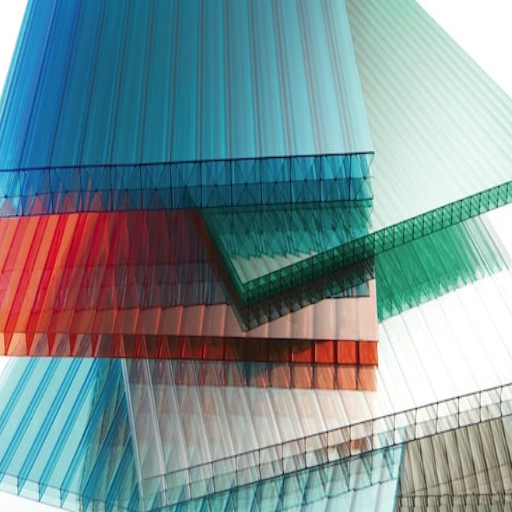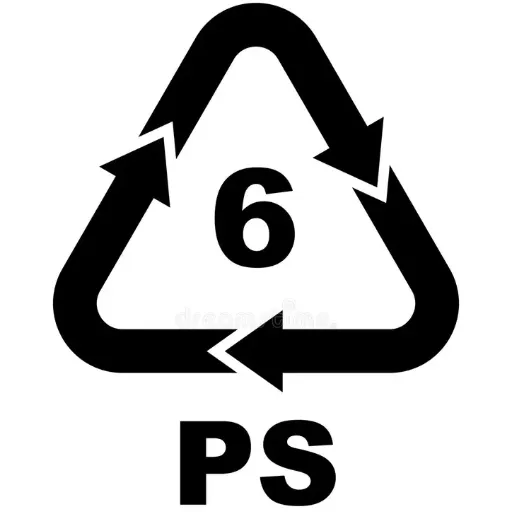Polycarbonate plastic has dramatically transformed many industries with its supreme tensile strength, durability, and versatility. Polycarbonate plastic, a modern material, has become a ubiquitous part of daily life, used in protective gear, automobiles, electronic gadgets, and building materials. But what contributes to making polycarbonate plastic stronger, with applications begging for immense strength? This article examines the unique nature and benefits of polycarbonate plastic, exploring how its strength and resilience are utilized in various diverse industries. By the end, an intense dive would have already provided the reader with in-depth knowledge of why this material is not just a good choice, but a must-have for many modern-day inventions.
What is Polycarbonate Plastic?
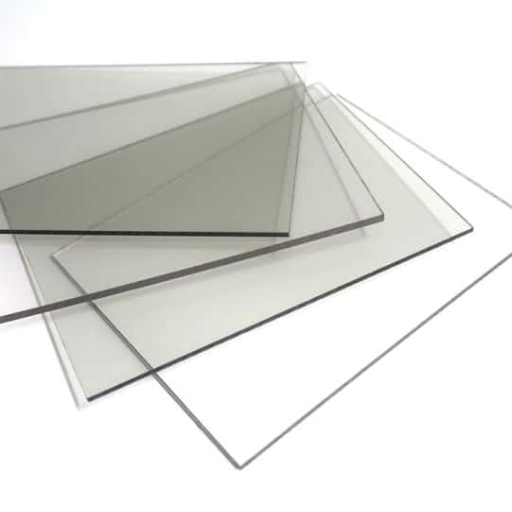
Definition and Composition
Polycarbonate plastic is considered a high-grade engineering thermoplastic noted for good strength, durability, and versatility. Chemically, it belongs to a group of thermoplastics that incorporate carbonate groups into their molecular backbone. Polycarbonate is developed primarily through the reaction of bisphenol A (BPA) with phosgene and has acquired a specific set of properties that make it useful for a wide range of end-use applications. Being transparent and lightweight, it exhibits good impact resistance, distinguishing it from many other forms of plastics.
One defining feature that polycarbonate boasts is its ability to retain structural integrity under extreme conditions. It can be exposed to temperature conditions varying from -40°F to 280°F (-40°C to 140°C) without suffering the loss of mechanical properties. Further, its very high degree of transparency, with more than 90% light transmission when pure, makes it suitable for various optical applications, such as eyeglass lenses, headlights of motor vehicles, and panels for greenhouses. Polycarbonate is further resistant to UV radiation and harsh chemicals, thereby increasing its durability and performance in demanding environments.
The composition of polycarbonate plays a significant role in determining its widespread use in various industries. It is malleable when presented to heat, hence allowing it to be molded into complex shapes. This makes it a preferred option for the construction, electronics, and automotive industries. Its lightweight yet sturdy nature has allowed this material to be utilized in place of glass and metal in many instances. This has curbed costs and brought forth efficiencies. In other words, polycarbonate is not just another plastic but one that characterizes and propels innovation within a multitude of industries.
Comparison With Other Plastics: Acrylic vs. Polycarbonate
Given the main differences between acrylic and polycarbonate, one must consider their particular properties and usages. Acrylic has been highly valued for its crystal clarity and glossy finish, making it an ideal material for use in areas where aesthetics are crucial, such as display cases, signage, and aquariums. However, acrylic is more brittle than polycarbonate and hence may crack or shatter under heavy impact.
Polycarbonate is superior to acrylic in terms of strength and resilience, and can withstand at least 250 times the impacts that glass can withstand. This exceptional strength makes it favorable for demanding applications such as bulletproof windows, safety shields, and industrial equipment. Furthermore, it is an exemplary heat resistor, retaining its structural stability even in extreme heat, whereas acrylic, under similar circumstances, will begin to melt or distort.
With its notable durability, polycarbonate, on the other hand, typically yields a higher return on investment than acrylic and may be less scratch-resistant in its untinted form, often requiring surface coatings for optimal functioning. On the other hand, acrylic is budget-friendly and easier to handle because of its lightweight nature and greater flexibility for cutting, shaping, and polishing.
Ultimately, whether one chooses acrylic or polycarbonate depends on the particular requirements of a project-whether it values cheapest measures and aesthetics or impact resistance and heat durability. Understanding these significant differences helps one select the material that best fits the functional and practical perspective of purpose.
Common Uses of Polycarbonate in Daily Life
Some of the attributes mainly contributing to polycarbonate’s ubiquity in applications are its impact resistance, optical clarity, and heat resistance. It is one of the more well-known materials for eyewear lenses, primarily because it can withstand impacts and is both light and user-friendly in terms of safety. Optical clarity and less chance of damage would ensure the protection of the arts inside CDs, DVDs, and Blu-ray discs, which is of paramount importance to them.
Polycarbonate sheets are also frequently specified for various building applications, including skylights, greenhouses, and roofing panels. The ability to transmit light and be almost unbreakable makes it an excellent glass substitute. Headlight and interior detailing use another popular application for polycarbonate in the automotive industry.
In fine arts, polycarbonate also has another application in consumer electronics. It is used for making lightweight and durable housings for laptops, tablets, and cell phones. In the application of safety equipment, polycarbonate remains the primary choice for helmets and face shields, including bulletproof windows, as it offers the highest level of protection without compromising visibility. Therefore, polycarbonate has emerged as a versatile product, offering the highest energy absorption and environmental benefits in human life.
Strength and Durability of Polycarbonate
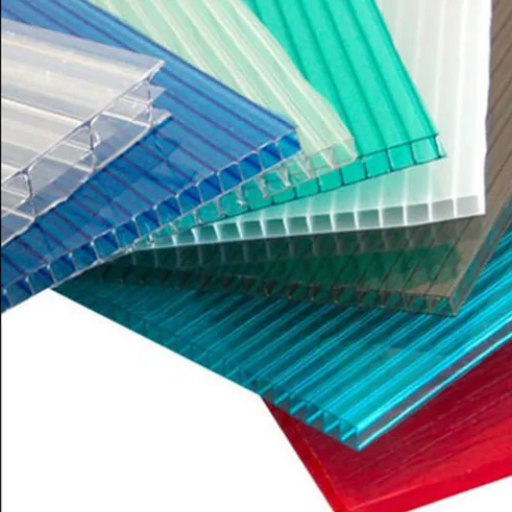
Tensile Strength Explained
Tensile strength means the capability of a material to resist forces that attempt to stretch or pull it apart. With tensile strengths of 60-70 MPa (megapascals), polycarbonate offers significantly greater resistance compared to conventional plastics. This is why it is selected when an application requires a solid material that withstands mechanical stress in automotive and structural parts.
Studies have demonstrated that polycarbonate retains its structural integrity even under extreme conditions, including wide temperature fluctuations and high-impact scenarios. Its unique molecular structure enhances the strength, allowing energy to be absorbed and distributed evenly throughout the material. Moreover, a strong polycarbonate would ensure a long lifespan of applications, thereby upholding sustainability efforts through a reduction in the frequency of replacements. The combined presence of that strength and longevity is precisely what makes polycarbonate the first choice wherever reliability and performance are of paramount concern.
Factors Affecting the Strength of Polycarbonate
Several factors influence the actual strength and performance of polycarbonate, and it is essential to know those variables to use the material to the utmost:
Temperature Variations: Polycarbonate maintains its strength over a wide temperature range; however, under extreme conditions, it may lose strength with heat, causing it to soften, and extreme cold, making it brittle. Fortunately, the material remains thermally stable for most applications, but it must be taken into account for temperature-sensitive setups.
UV Exposure: When subjected to prolonged periods of UV light irradiation without suitable protective coatings, polycarbonate surfaces undergo degradation, resulting in a reduction of their mechanical strength over time. To improve durability in outdoor applications and maintain mechanical stability over the long term, these surfaces are typically equipped with UV-resistant coatings or additives.
Chemical Resistance: The polycarbonate with chemical resistance acts essentially to enhance the material’s strength. They are resistant to oils and alcohols but may be affected by the action of strong acids, alkalis, or certain organic solvents. Hence, it should be chosen and used appropriately in chemical-inducing environments to ensure that it lasts and serves well.
Load-Bearing and Stress: The application of a mechanical load upon a polycarbonate structure, whether constant or repeating, eventually affects it. Being stressed and subjected to strain over a period can cause fatigue fractures in the material; the phenomenon attracts concern in cases of heavy loading. Hence, stress-relieving provisions are incorporated in most engineering designs to retain their durability.
Thickness and Design: The thickness of polycarbonate sheets and the design geometry are essential factors in strength. The thicker the sheet, the better it can resist impact and distribute loads; meanwhile, a clever design will ensure that stress concentration is kept to a minimum, thereby improving its strength.
Additives and Recyclability: Various additives, such as flame retardants, UV stabilizers, and reinforcements, can enhance polycarbonate properties related to strength. Furthermore, depending on the processes and purity, polycarbonate recycled from old products may exhibit slightly different mechanical properties compared to virgin material.
Appreciating all these factors should help all stakeholders apply polycarbonate appropriately, thereby making the best use of the material across various industries, from construction to automotive and beyond.
Wear and Tear in Different Conditions
Strength of Polycarbonate: Among special materials, the capabilities of polycarbonate are highly reputed globally. It is capable of performing well under a variety of conditions. This thermoplastic material exhibits excellent resistance to impact. It resists mechanical loads when one tries to solicit parallel stretching or compressing forces, as well as effects with forces applied perpendicularly, until present levels of force are high enough to break through the glass without much cracking or splitting—withstanding weather extremes in tough conditions, from something as cold as -40°F to something as warm as 248°F, performing such fine tasks that include being a component in the automotive field, aerospace parts, and outdoor glazing systems. The sixth consideration is the capability of polycarbonate to resist ultraviolet radiation, which is then enhanced with a particular coating to increase performance and reduce yellowing or brittleness when exposed to prolonged periods under direct sunlight.
Another quality that contributes to polycarbonate’s durability is its resistance to moisture and chemical exposure. While most materials may dissolve or warp under humid conditions, polycarbonate maintains its dimensional stability, making it ideal for applications where moisture levels are high, such as in greenhouses or marine environments. Chemical resistance to acids, alcohols, and oils enhances its capabilities in industrial settings, where exposure to chemicals is a constant concern.
Combining these attributes results in polycarbonate having the rare advantage of serving many industries. Its durability guarantees that it will provide dependable service in the most demanding conditions: whether by housing vulnerable electronics with impact-proof casings, or providing a transparent yet hardy medium for architectural applications, or being assuredly strong for protective equipment.
Polycarbonate Sheets and Their Applications
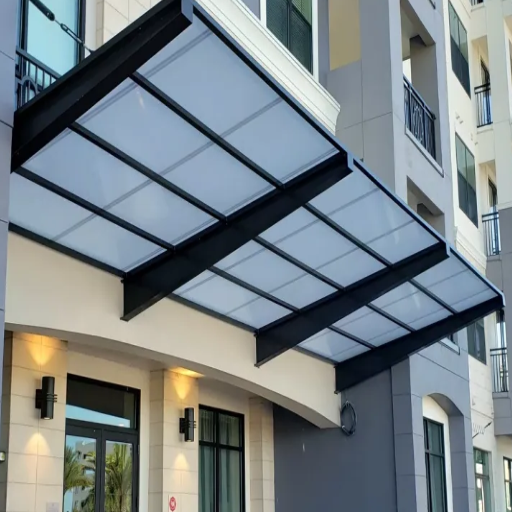
Types of Polycarbonate Sheets Available
Ethylene sheets come in a vast array of types and sizes, each manufactured to fulfill specific applications across varied industries. Below are those generally offered:
Solid Polycarbonate Sheets: These sheets are sometimes said to be stronger and more transparent than glass, and are used primarily where impact resistance and transparency are of utmost importance. Industries include safety glazing, machine guards, and applications that require an architectural appearance resembling glass but are considerably stronger.
Multiwall Polycarbonate Sheets: The two-layer construction, with multiple walls, provides excellent thermal insulation while maintaining a mild weight. Applications include greenhouses, skylights, and roofing, where energy efficiency, light diffusion, and other factors are closely intertwined.
Corrugated Polycarbonate Sheets: With a wavy profile, the sheets impart high impact strength and some degree of flexibility to roofing and cladding applications in commercial and residential buildings. They are weatherproof and carry away rainwater for long outdoor service.
UV-Resistant Polycarbonate Sheets: These sheets feature a coating with a UV protection layer, ensuring they can be placed outdoors for extended periods without yellowing or deterioration from sun exposure. Common applications include canopies, outdoor signage, and any other structure subjected to direct sunlight.
Textured Polycarbonate Sheets: These sheets feature a textured surface that provides privacy while allowing light to pass through. They are widely used for partitions and decorative features in interior design, as well as for shower enclosures and privacy glazing.
Anti-static Polycarbonate Sheets: Created to prevent the accumulation of static electricity, these sheets find the utmost utility in areas where delicate electronic equipment is used, in clean rooms, and electronics manufacturing plants, among others.
Fire-Retardant Polycarbonate Sheets: These sheets conform to strict fire safety standards and are therefore ideally suited for applications in public locations and facilities, such as transportation terminals, schools, and hospitals. Being able to retard the spread of fire provides a significant safety advantage while maintaining the integrity of the structure.
With its wide range of variegated types, polycarbonate sheets offer tailor-made solutions for construction, electronics, and more, ensuring maximum performance and longevity customized to specific requirements.
Industrial and Residential Enclosure Applications
Polycarbonate sheets are known for their greater durability, lightweight, and flexibility, and are widely used for industrial and residential enclosures. In industrial environments, these sheets are most commonly applied in protective barricades, machine covers, and storage enclosures, ensuring that safety is guaranteed and equipment can withstand harsher conditions. Their impact-resistance property only makes them more desirable for protecting delicate equipment from exposure to debris and accidental damage.
In residential applications, polycarbonate sheets are typically used in greenhouses, patio coverings, and skylights. These sheets allow ample light transmission while providing high protection from UV rays, weather elements, and other environmental factors. Polycarbonate also provides a layer of thermal insulation, which improves energy efficiency and reduces heating and cooling bills. Industry insiders view rising demand for polycarbonate enclosures as a result of improved material production procedures and a stronger focus on eco-friendly and sustainable construction alternatives. Their application in a wide variety of settings emphasizes them as a novel and trusted material for enclosure designs.
Advantages of using Polycarbonate Sheets for Safety and Security
Due to their immense strength and durability, polycarbonate sheets set the highest standard for incorporation within safety and security applications. These sheets can withstand forces 250 times greater than those used in regular glass-making, including breaking, vandalism, and environmental conditions such as hailstones. This extreme resilience is especially suited for use in security windows, protective barrier systems, or roofing.
Additionally, polycarbonate sheets are lighter than traditional materials, making their transportation and installation easier without compromising on strength. They also have excellent translucence, allowing for clear visibility without compromising on durability or safety, something much appreciated for spaces with natural light, like schools, offices, and homes. Another plus factor in their longevity is the radiation of UV resistance, which in turn retains their strength and well-faced glories for longer spans once out in the open.
The other crucial benefit is its fire-retardant nature. Many polycarbonate sheets retain a flame-retardant rating, meeting stringent safety standards, thereby adding an extra layer of security with their application wherever fire incidents pose a risk. Thanks to their strength, clarity, and protective properties, polycarbonates thus remain the most sought-after material for modern-day guarding and security applications.
Polycarbonate in Food Contact Applications
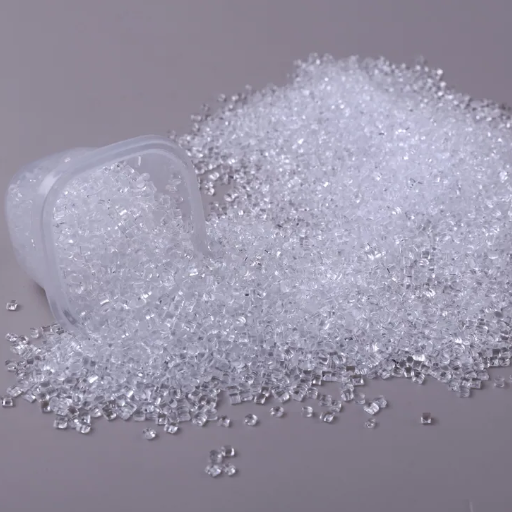
Safety Standards for Food-Grade Polycarbonate
Food-grade polycarbonate is the material of choice for containers, bottles, and kitchenware as it provides the necessary functionality and safety. Different regulatory agencies have developed very stringent guidelines to ensure the safe use of food contact materials.
An example of this is the U.S. Food and Drug Administration (FDA) and the European Food Safety Authority (EFSA), both of which have standards that permit the use of polycarbonate in food applications if specific regulatory requirements are met. These standards consider various factors, such as the capacity to leach Bisphenol A (BPA), an element used during polycarbonate manufacturing, under varying scenarios of temperature and use. Therefore, almost all food-grade polycarbonates are manufactured to limit BPA migration to amounts considered safe under current regulations, thereby presenting no risk to consumer health.
Polycarbonate types are being made with continuous advancements in manufacturing. They are innovations that resolve consumer apprehensions and change safety standards. Labels and certifications, such as BPA-free or FDA/ESFA safety standards, offer some transparency for users, reassuring them that the material is safe for food contact. As the demand for safer and sustainable alternatives is on the rise, polycarbonate for food applications remains a dependable choice used in various applications worldwide.
Advantages of Using Polycarbonate for Food Storage
The polycarbonate is unique because it combines durability with transparency and safety, making it suitable for use in food storage containers. The high impact resistance of this material ensures that food containers withstand their daily wear and tear with minimal damage, so they are rarely replaced, but rather maintained for long-term use. Additionally, the lightness of the polycarbonate makes it easier to carry, which is a convenience factor for individuals who require pragmatic storage solutions.
Another important factor is recent temperature changes. Being unable to be warped or broken by high and low temperatures means that polycarbonate may be utilized in the freezer and microwave. This gives it the ability to be versatile in preserving perishable items or even reheating meals. The surface is non-porous, so odors and stains cannot seep in, allowing it to retain its mat surface for a while.
On safety grounds, modern advances in polycarbonate formulation have led to BPA-free grades that answer consumers’ concerns about material safety for food contact. Compliant with international safety standards, such as FDA and EU regulations, it provides further assurance to the user. Polycarbonate is an excellent choice for future food storage innovations, as it promotes sustainability through its durability and recyclability, thereby supporting both individual and environmental well-being.
Alternatives for Polycarbonate in Food Applications
Even though polycarbonate has many advantages, other materials are being increasingly used in food applications amid growing consumer demand for sustainability and safety. Here are some options frequently used:
Glass: Glass is a type of material that is said to be highly durable and non-toxic. Since it is said to avoid leaching chemicals, food or beverages can be stored safely. Glass can be recycled if someone wants to go eco-friendly. Additionally, a tempered variety is available, which is considered harder to break than non-tempered glass.
Stainless Steel: Another dependable alternative is stainless steel, which offers strength, resistance to rust, and the inertness mentioned above. It sees use in plated containers and utensils that can be reused and recycled. The stainless steel used in cooking and storage retains its properties over time, ensuring food quality is not compromised by high temperatures.
Tritan™ Copolyester: A plasticky BPA-free alternative, Tritan™ copolyester delivers clarity, durability, and chemical resistance. It is typically found in drinkware and reusable bottles, emulating polycarbonate’s best qualities while being safe for food contact. This lightweight grade is well-suited for daily use.
Silicone: Flexible, non-toxic, and heat-resistant, silicone is now enjoying a high profile as a material for food-grade containers, baking mats, and lids. Easy to clean, silicone is durable and safe for use in the microwave and the oven. Excellent pliability makes this material all the more useful in creative kitchen applications.
Polylactic Acid (PLA): As a great biodegradable material with renewable source extraction (from corn starch, for example), it is emerging as an eco-friendly option. PLA is currently used for single-use food packaging and cutlery. As a compostable material, PLA helps reduce plastic waste. However, its heat tolerance may be slightly lower than that of the other materials – it needs to be handled with care.
High-Density Polyethylene (HDPE): This food-safe plastic is lightweight and commonly used for milk jugs, food containers, and packaging. It is BPA-free, reasonably durable, and recyclable, hence meeting the usual safety and sustainability standards. Due to its versatility and low production cost, HDPE remains a popular choice for many applications.
These alternatives, in turn, reflect the growing commitment of the food industry to safer and more sustainable material choices. Whether fully aware of it or not, consumers and manufacturers alike can help ensure a healthy, environmentally conscious future by considering factors such as durability, reusability, and recyclability.
Plastic Machining and Polycarbonate
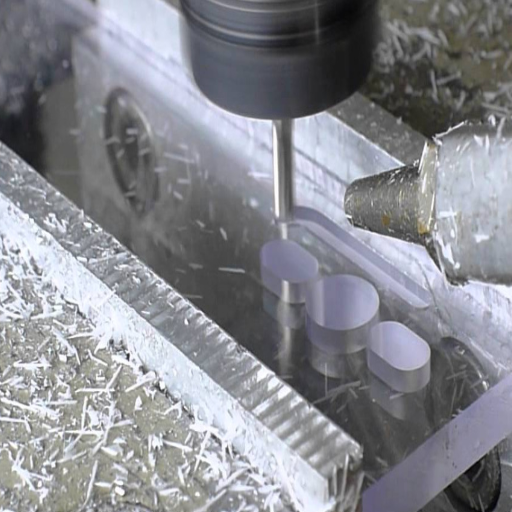
Techniques for Machining Polycarbonate
In machining polycarbonate, I ensure that specific key techniques are applied to ensure precision and avoid material damage. First, I would always insist on using sharp tools with high rotation speeds, designed explicitly for plastic use. These tools cannot be shared with those who have become dull elsewhere, as mechanical stress can be created in the material, leading to various types of cracking. Control of speed and feed rate is crucial: cutting rates are kept high. In contrast, the development of feed rates is kept low; high temperatures could lead to softening or discoloration of the polycarbonate.
To maintain a neat appearance, I ensure good cooling treatment during cutting. Regular drying for cutting would typically use compressed air, while others would employ light mists of coolant. This prevents heat buildup and lessens the possibility of melting or deformation of the workpiece. Finally, locking down the workpiece adequately to prevent vibrations is also crucial in securing clean or sharp-cut edges.
Finally, I always deburr and polish the edges after machining to achieve a smooth, professional finish. Fine-grit sandpaper and flame polishing are effective methods for removing imperfections while maintaining the structural integrity of the polycarbonate. Each of these deliberate, well-thought-out steps ensures that polycarbonate projects are completed efficiently and effectively, both functionally and aesthetically.
Advantages of Machined Polycarbonate for Custom Applications
In my opinion, it is the incredible versatility and performance that machined polycarbonate offers in custom applications. One of its most significant advantages is high impact resistance combined with the ability to keep the weight down, which renders it an extremely reliable dual-use choice for projects that demand durability without the burden of extra weight. Whether it’s industrial machinery components or custom prototypes, polycarbonate provides a standard level of resilience rarely matched by other materials, especially under extreme conditions.
Another key feature is its excellent optical clarity, which makes it suitable for protective covers, light diffusers, or practically anything that requires translucent properties. The other side of the coin is that polycarbonate retains its clarity when machined to exact specifications, and it can be cut into smaller sizes and shapes, or even combined with custom designs offered by outsourcing facilities, all of which create a solution that best fits the project’s requirements. Moreover, the machining ability of the material accelerates processing times, thereby lowering costs, particularly for intricate or complex designs.
Lastly, I appreciate how polycarbonate can be modified: machined, drilled, polished well, or even worn down to meet a particular, awkward need. Its versatility provides the exact composite-fitting I require, while keeping the material as strong and attractive as possible. When properly machined, polycarbonate, with the right equipment and method, proves itself as my favorite material in the most challenging custom applications.
Challenges and solutions in plastic machining
One of my primary challenges is thermal expansion during the machining process. Plastics, such as polycarbonates, can heat up rapidly during machining, leading to dimensional inaccuracy or surface imperfections. To prevent this, I usually keep tools sharp and use low feed rates to avoid any build-up of heat. I will also ensure that there is sufficient coolant flowing, or compressed air can help dissipate heat, thereby maintaining the stability and tolerance of the material.
Avoiding material stress during and after machining is yet another challenge. Certain plastics can develop internal stress that results in warping or cracking, especially after cutting or drilling. To alleviate this, I may anneal the material before machining, intentionally reducing internal stresses to facilitate easier machining. In some instances, the annealing process to relieve stresses in the material is best done after machining to stabilize the final part and eliminate the risk of premature failure.
Lastly, plastics are sensitive and tend to be scratched or marked; therefore, they often have smooth finishes. Therefore, I perfectly fine-tune my finishing techniques- polishing with compounds or sanding with excellent grits. Tooling, speed, and finishing processes must be harmonized in my mind to ensure that I consistently produce high-quality components that meet the challenge set by each project’s specific specification.
Reference Sources
-
View Polycarbonate Strength, Impact Resistance – Curbell Plastics
Discusses the strength, stiffness, and impact resistance of polycarbonate plastic, even at low temperatures. -
Polycarbonate: Advantages, Disadvantages, and More – Protolabs
Highlights the versatility, durability, and exceptional impact resistance of polycarbonate plastic. -
Polycarbonate – Wikipedia
Provides an overview of polycarbonate’s properties, including its strength, toughness, and optical transparency. -
Popular Uses for Polycarbonate Plastic – Acme Plastics
Explores the applications of polycarbonate plastic, emphasizing its strength and impact resistance. -
View Polycarbonate Strength, Impact Resistance – Curbell Plastics
Details the properties and applications of polycarbonate, emphasizing its toughness and transparency. - Top Plastic Pellets Suppliers in China
Frequently Asked Questions (FAQs)
How strong is polycarbonate relative to other plastics?
Polycarbonate is more robust than many other types of plastic. It is said to be 250 times stronger than glass and much stronger than acrylic. This high-impact strength makes polycarbonate the preferred choice where high durability is of utmost concern—for example, in machine guards and enclosures. It is capable of withstanding highly intense impacts and stress without cracking or breaking, thus rendering it unparalleled among transparent plastics. Being a thermoplastic, polycarbonate can be molded into various shapes, significantly increasing its use for multiple purposes.
What properties of polycarbonate contribute to its strength?
Polycarbonate traits that confer strength include high impact resistance and durability. This polymer is characterized by its capacity to withstand severe conditions, such as elevated temperatures and radiation from a UV source. Polycarbonate materials offer higher optical clarity, which is necessary for applications where transparency is paramount, such as glazing and protective shields. Its heat resistance and ability to engrave are additional benefits to the utility of this product. Combined, these features make polycarbonate superior for use in both industrial and commercial applications.
Can polycarbonate resist UV rays?
Almost impervious to UV radiation, polycarbonate has been treated to increase its UV resistance, preventing degradation or yellowing after prolonged exposure to sunlight. Polycarbonate will be favored for outdoor applications such as polycarbonate enclosures and glazing. The essence of UV protection lies in its ability to allow polycarbonate products to withstand weathering with their strength and clarity intact, making them a good, durable option for any structure exposed to the elements. Polycarbonate has better UV protection among plastics.
What are some polycarbonate applications demonstrating its strength?
Since plastics like polycarbonate have numerous uses and applications that demand high strength and durability, their outstanding impact resistance makes them suitable for applications such as safety glasses, protective gear, and covers for electronic devices. It also finds applications as a machine guard and a safety enclosure material. Molding and machining enable polycarbonate freeform to meet design specifications for both industrial and consumer products, providing flexibility to fit specific requirements. Polycarbonate, also, is sometimes used in the medical field for devices requiring a strong, explicit material.
Is polycarbonate a food-contact safe plastic material?
Polycarbonate can be used in food contact applications as long as it meets specific regulatory requirements. When manufactured correctly, this polymer provides good chemical resistance and does not leach contaminants that are harmful to humans. It should, nevertheless, be ensured that the grade of polycarbonate used is intended for food contact. Most polycarbonate manufacturers today produce BPA-free polycarbonates to allay any concerns about bisphenol A exposure. Consequently, polycarbonates are safe, when used properly, for food storage and packaging applications.
Which is stronger, acrylic or polycarbonate?
Polycarbonate typically exhibits greater strength than acrylic in terms of offering impact resistance and durability. Whereas acrylic is a relatively lightweight and transparent plastic, polycarbonate is more resistant to cracking or breaking under stress. Thus, it becomes favorable for polycarbonate to be used wherever superior performance is required, such as in high-impact environments. Polycarbonate also resists UV to a greater extent and withstands higher temperatures without sacrificing its integrity. Hence, polycarbonate is more suitable than acrylic for applications requiring both strength and clarity.

